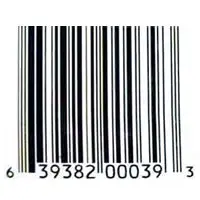Working of UPC Bar Codes
The "Universal Product Code", also known as UPC Bar Code can be found in almost all packages that you buy from department stores, grocery stores or any other stores.
In this post we will discuss on where these codes come from and their actual use.
Origin of UPC Bar Code
The UPC was first developed by a company called Code Council [UCC] so as to help the small scale department stores and grocery stores to speed up their checking out process and also to make a correct digital track of all the sales that happen in a period of time. The system turned out to be very successful that almost all manufacturers started using this method for all retail products.
The manufacturers have to get a permit from the UCC to use this system. The UCC helps the manufacturer to understand the whole process and gives him a 6 digit manufacturer identification number for an annual fee.
The Coding Process
An item number is assigned for each product and the number is unique until that particular product has stopped its sale in the market. All these unique numbers will be given by a UPC co-ordinator who will be employed by the manufacturer. Take a look at the figure below to know what a UPC bar code looks like.
A UPC code will be a 12 digit number which is divided into two parts.
The machine readable bar code.
The human readable 12 digit UPC number.
Out of the 12 digits the first 6 digits represents the manufacturer's number and the next five represents the product number. The last number is called the check digit number.
As a result the UPC co-ordinator will have to make different codes for different sized packages of the same product as well. That is 100 gram toothpaste will not have the same barcode as 500 gram toothpaste [both being of the same manufacturer].
As explained earlier, the last digit of a UPC code is the check digit number. The last digit is very important as it allows the scanner to know whether the correct UPC is given for the product. You may be thinking how a single digit helps in verifying the whole number. Actually this single digit is calculated from all the other 11 digits. Take a look at the example given below.

- UPC Code
Let the code of a certain product be 63938200039.
Step 1
Take the digits from all the odd positions and add them. That is add the 1st digit, 3rd digit, 5th digit and so on.
6 + 9 + 8 + 0 + 0 + 9 = 32
Step 2
Multiply the answer obtained from step 1 with 3
32 * 3 = 96
Step 3
Take the digits from all the even positions and add them. That is add the 2nd digit, 4th digit, 6th digit and so on.
3 + 3 + 2 + 0 + 3 = 11
Step 4
Add the answer obtained from step 4 to the value in step 2.
96 + 11 = 107
Step 5
This is the last step that determines the check digit.
Determine the smallest number that, when added to the answer in step 4, is a multiple of 10.
107 + 3 = 110
Thus the check digit is 3.
Each time a product is scanned by the scanner, this calculation showed above is performed. The scanner reads a check digit. If the calculated check digit is different from what it reads, then the scanner shows a false signal. Thus the manufacturer will have to recheck the UPC code or has to rescan till it gets the correct code.
Sometimes smaller products are only given smaller digit UPC bar codes called zero-suppressed numbers. Apart from the manufacturers ID, it will be followed by a lot of 0's.
Product Price Determination
You must have noticed that the price of any product is not given its cover. There will only be a bar code. The idea behind this is that when the customer buys a product, he scans the bar code. Thus the information in the bar code is sent to the store's central computer to look up the UPC number. The central computer sends back the actual price of the item at that moment.
Due to this method, the manufacturer can easily change the price of the product whenever he wants. This can be a disadvantage as well because the store keeper can easily fool the customer. But the idea was mainly intended to change prices when there is a change in the market price.
The first digit of the manufacturer's identification number is special. It is called the number system character. The meaning of the different number system in a UPC code is shown below.
0 Standard UPC number (must have a zero to do zero-suppressed numbers)
1 Reserved
2 Random-weight items (fruits, vegetables, meats, etc.)
3 Pharmaceuticals
4 In-store marking for retailers (A store can set up its own codes, but no other store will understand them.)
5 Coupons
6 Standard UPC number
7 Standard UPC number
8 Reserved
9 Reserved
--
With Regards,
s.m.sethupathy,
sms communication,
Tanjore -1.
mobile :9944 186 173
www.questionpaperlink.co.cc
www.sethu-panguvarthagam.blogspot.com









Currently have 0 comments: